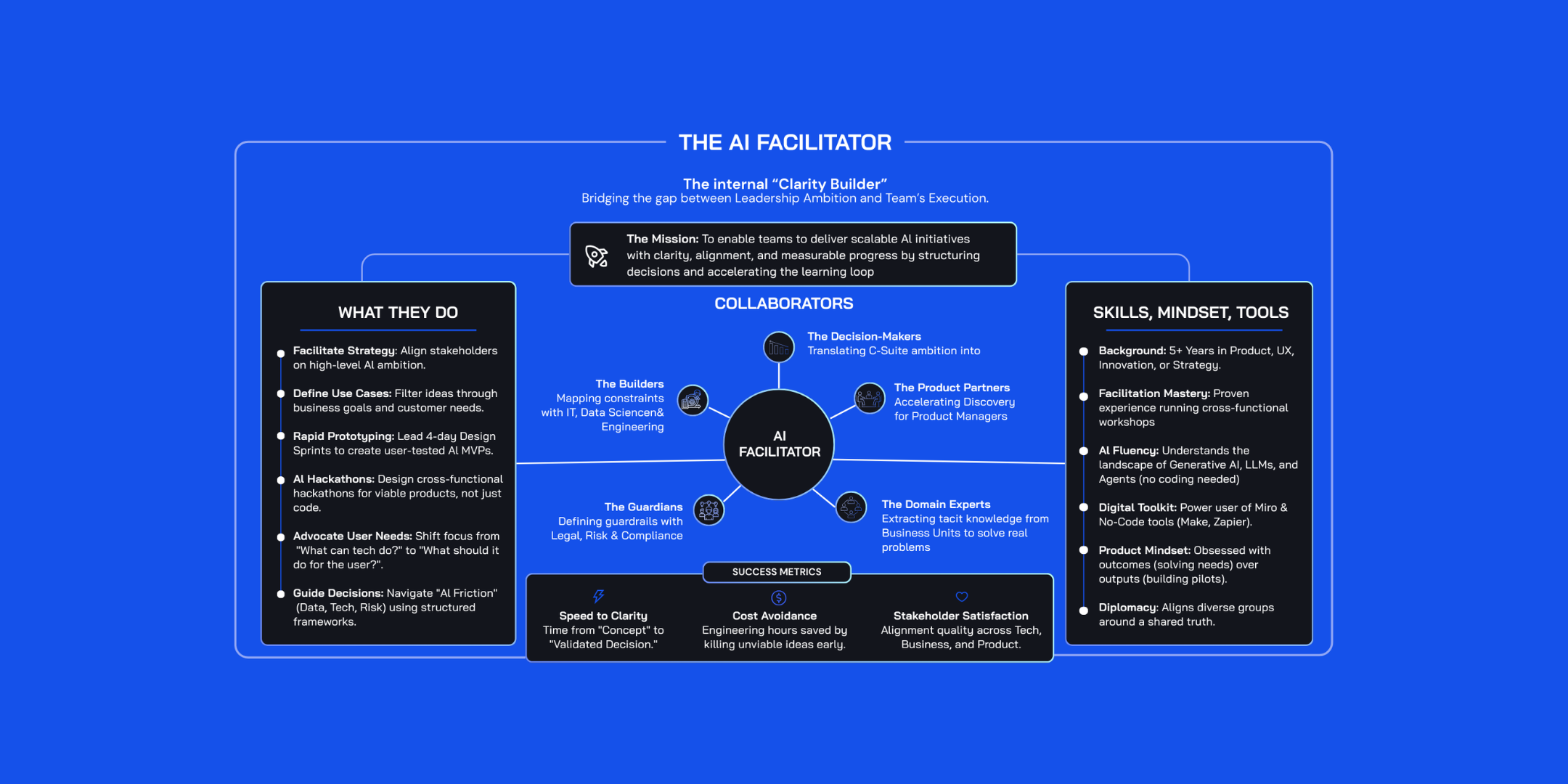Should Product Managers Say "Yes" to Design Sprints?

Are you unsure whether design sprints are worth it? You’re not alone. In the world of product management, design sprints have been portrayed as everything from miraculous solutions to overhyped snake oil. With so many voices both for and against, it’s no wonder you might feel torn about whether to embrace this methodology. On one hand, proponents tout design sprints as a catalyst for disruptive innovation; on the other, critics warn of wasted resources and unmet expectations.
Let's consider both sides of the argument. This will help you make a well-informed decision that aligns with your goals and promotes growth, both for your product and your professional journey.
A design sprint is a four-day process initially developed by Google Ventures to tackle critical business questions through design, prototyping, and testing ideas with customers. It's a rapid, collaborative method intended to accelerate decision-making and foster innovation.
Pros of Design Sprints
1. Focused Problem-Solving – Time Limits Keep Teams on Track
Design sprints aim to rapidly solve problems by bringing teams together for a week of intense focus. This concentrated effort can achieve in days what might otherwise take months.
Slack, the popular team communication tool, utilized design sprints during its formative stages. By rapidly iterating based on user feedback, Slack refined its interface and features efficiently. This approach not only saved time but also conserved resources that might have been spent on less effective development cycles.
2. Reduced Risk – Catching Problems Early
Testing realistic prototypes with real users early in the process can uncover 85% of major issues. Incorporating user feedback before investing heavily in development can save a lot of money.
Consider the case of the Segway, introduced in 2001 as a revolutionary personal transportation device. The company invested substantial resources into development and engineering, with high expectations of transforming urban mobility. However, they didn’t test the product with everyday users in real-world environments before launching. In fact, they kept it as a secret.
As a result, the Segway team overlooked critical factors such as practicality, affordability, and user acceptance. When the product hit the market, it struggled to gain widespread adoption. Many consumers found it expensive and impractical for daily use. This led to disappointing sales, significant financial losses, and the company eventually shutting down after losing millions of dollars.
3. Robust Solutions – Collaboration Reduces Blind Spots
When team members from various departments collaborate, it fosters a holistic approach to problem-solving. Without cross-functional collaboration, companies risk developing products that miss the mark because they haven’t considered all perspectives.
Google Glass is a good example of what can happen when teams work in isolation. Google Glass was a new kind of wearable computer that was introduced in 2012. It was a good idea, but the development team didn't work closely with other departments like marketing, legal, or user experience. They also didn't test the product with many real users.
Because of this, Google didn't think about things like privacy, social acceptance, and how people would actually use the product. People were worried about being recorded without their permission, and the product was too expensive and didn't do enough for most people.
The lack of collaboration led to blind spots that could have been addressed through input from diverse teams and early user testing. By the time these issues became apparent, significant resources had already been invested, and the product struggled to recover from its negative reception.
4. Streamlined Decision-Making – Get Things Done Faster
In our experience working with big companies, we've seen teams waste a lot of time arguing about which features to focus on next. Sales, marketing, and user research often have different ideas about what customers want, and this can make it hard for teams to decide what to do.
By adding design sprints into the mix, you replace back-and-forth discussions with direct user insights. Instead of debating internally, you test prototypes with real users to see what works and what doesn’t. This approach not only accelerates decision-making but also ensures that the team’s efforts are aligned with actual customer needs.
Cons of Design Sprints
1. Resource-Intensive – Hard to Find Time for Everyone to Participate
Design sprints can be time-consuming, requiring key team members to dedicate a full week to the process. This can be challenging when those people are already busy with other projects. Their absence can lead to missed deadlines, stalled progress, and increased workload for the rest of the team.
It can also be hard to measure whether the benefits of a design sprint are worth the cost. If the results aren't immediately obvious, teams may question if it was worth the time and effort.
This is especially true for smaller problems that might not require such a big effort. Often, these sprints lack full support from stakeholders who may not see the value in allocating substantial resources to challenges such as improving the landing page, simplifying the checkout process to reduce friction, or creating a more intuitive navigation structure to improve user experience and decrease bounce rates. And they are right! These types of challenges (incremental improvements to existing features, resolving specific usability issues), are often better addressed using less intensive, more targeted UX approaches.
2. Superficial Solutions – Limited Time for Deep Understanding
Design sprints can be a quick way to solve problems, but they may not allow for a deep understanding of complex issues. Teams might not be encouraged to think creatively, and they might not be given the right problem to solve. It can also be hard to build empathy for users within the short time frame of a design sprint.
In a design sprint, only one day is usually spent understanding the customer and defining the problem. This isn't enough time to get real user insights, do thorough research, or clearly define the problem. Without a deep understanding, teams might make assumptions or rely on surface-level data, which can lead to solutions that don't address the real problem.
As a result, teams might end up with ideas that are convenient rather than innovative, simply because there wasn’t enough time or information to inspire more creative thinking.
3. Misalignment with Long-Term Goals – Might Not Fit with Strategic Plans
Focusing intensely on a specific problem during a design sprint might cause teams to lose sight of broader strategic objectives, leading to products that don’t align with the company’s vision.
Sometimes, Product Managers struggle to align innovative ideas or areas of opportunity with the company’s strategic plans. They might uncover a real user need, hear about an innovative concept, observe competitor movements, or spot emerging trends. However, managing these insights within cascading goals can be challenging.
Without a clear connection to strategic objectives, even the most promising ideas can become isolated efforts that don’t receive necessary support or resources.
4. Misconceptions About Prototypes – Confusion Can Lead to Implementation Challenges
A common challenge arises from the false perception that the sprint prototype is the actual product. In a design sprint, the prototype is meant to be disposable; its primary goal is to validate desirability, not viability or feasibility. It’s a tool to test ideas with users and gather feedback, not a finalized product ready for development or market launch.
When Product Managers misunderstand the purpose of the prototype, several issues can occur:
- Technical Team Pushback: Developers and engineers may review the prototype as if it’s intended for immediate implementation. They might raise concerns about technical constraints, resource requirements, or timelines, leading to frustration and misalignment.
- Business Team Pushback: Stakeholders may consider the prototype when evaluating investment decisions, expecting it to reflect a fully vetted product. This can result in skepticism about the project’s viability if they perceive the prototype as incomplete or impractical.
Key Factors to Consider When Deciding on a Design Sprint
To determine whether a design sprint is the right approach for your team, consider the following factors:
✅ Alignment with Strategic Goals
- Does the sprint fit with the company's objectives?
Ensure the design sprint aligns with your company’s long-term goals and strategic plans. This alignment increases the likelihood that the outcomes will receive support and provide meaningful value, rather than being an isolated effort that doesn't integrate with the broader roadmap.
✅ Problem Complexity
- Is the problem suitable for a design sprint?
Evaluate whether the problem at hand is appropriate for the design sprint format. Design sprints are most effective for complex challenges that can benefit from focused, collaborative effort and rapid prototyping. Conduct preliminary research and problem-framing to ensure you're targeting the right opportunity.
✅ Problem Clarity
- Is the problem well-defined and understood?
Ensure that the problem you're addressing is clearly defined and that the team has a sufficient understanding of the user's needs. Without clarity, the sprint may result in superficial solutions. Invest time in pre-sprint activities to build empathy with users and gather relevant insights.
✅ Stakeholder Support and Organizational Culture
- Is there support for innovation and rapid experimentation?
Consider whether your company's culture supports rapid experimentation and cross-functional collaboration. Strong support from sponsors and stakeholders is essential for the success of a design sprint. Without their buy-in, the sprint may lack the necessary resources and influence to drive meaningful change.
✅ Team Capacity and Resource Availability
- Can key team members commit to the sprint without impacting other critical work?
Assess whether your team has the capacity to dedicate crucial members to the sprint without causing significant disruption to ongoing projects. Consider whether the potential benefits of the sprint outweigh the costs of diverting resources and possibly missing other deadlines.
✅ Post-Sprint Implementation Plan
- Is there a plan for turning prototype insights into actionable steps?
Recognize that the sprint prototype is a tool for validation, not a final product. Plan for the post-sprint phase by outlining how insights will be translated into development work. Communicate the purpose of the prototype to technical and business teams to manage expectations and facilitate a smoother transition to implementation.
Conclusion
Design sprints can be a valuable tool for product managers, offering a structured approach to innovation and problem-solving. They enable teams to rapidly develop and test ideas, potentially saving time and resources.
But, they're not a one-size-fits-all solution.
It's important to carefully consider the pros and cons, as well as factors like strategic alignment, team capacity, stakeholder support, problem clarity, and post-sprint planning.
Even if a full design sprint isn't the right choice, you can still use some of its elements, like early prototyping and user testing. The best approach will depend on your specific needs and goals.



.jpg)





